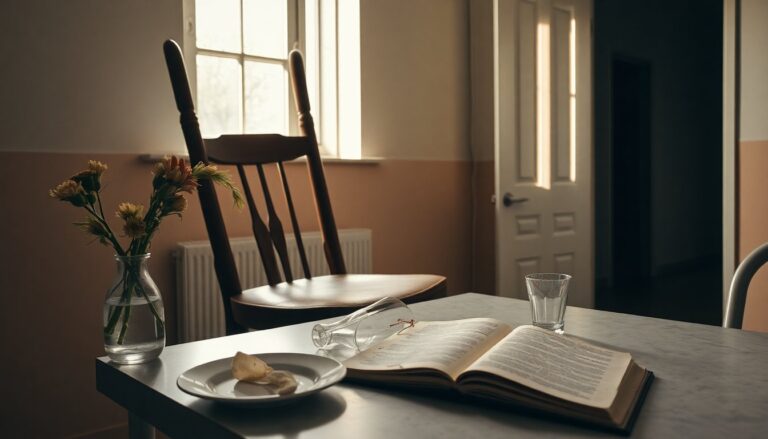Argomenti trattati
Each year, on November 25, the world acknowledges the International Day for the Elimination of Violence Against Women. This observance sparks vital discussions surrounding a significant and ongoing issue. Cinema often serves as a powerful medium to express emotions and experiences that words alone might fail to convey. One such film is C’è ancora domani, the debut work of Paola Cortellesi, which quickly transformed into an emblem of female awareness, resilience, and hope.
This film’s impact extends beyond its narrative value; the audience’s response has been remarkable. In 2025, it grossed an impressive €36.6 million, becoming the most viewed film of the year and reaching audiences in 15 countries, including France. Its presence on streaming platforms further solidified its popularity, debuting in the Netflix top ten and attracting 714,000 viewers on Sky during its premiere, setting new records. Such statistics exemplify how Delia’s story resonates deeply and universally.
The narrative of Delia and the backdrop of post-war Rome
The narrative of Delia unfolds amidst the vibrant yet challenging reality of post-war Rome. It intertwines her personal struggles with those of countless women still fighting for a brighter future. The film is poignantly shot in striking black and white, evoking the atmosphere of the late 1940s when the city was just starting to recover from the devastation of war.
Delia, portrayed as a devoted wife and mother, finds herself overshadowed by her husband, Ivano (played by Valerio Mastandrea), a man who embodies authoritarianism and violence in their household. Her sole source of solace is her loyal friend Marisa (Emanuela Fanelli), who injects a sense of lightness into her otherwise mundane and oppressive days filled with chores and humiliation. Meanwhile, the young Marcella dreams of escaping her reality through a bourgeois marriage. Life seems stagnant until a mysterious letter ignites a spark of courage in Delia, prompting her to challenge the fate that had been predetermined for her.
The vibrant setting of Rome as a character
Cortellesi invites viewers into a lively and authentic depiction of Rome, rich with the essence of its post-war neighborhoods. The heart of the film lies in the residential complex at via Bodoni 98, located in the Testaccio district. This courtyard, accessible through a modest gate, becomes Delia’s daily refuge as she opens the basement window, an act symbolizing her silent resistance amid the challenges she faces.
Delia’s daily routine consists of various small jobs that take her across different quarters of Rome, painting a comprehensive picture of the city’s social fabric during the post-war era. Her journey begins at via della Madonna dei Monti, where she visits the notary’s office for errands. She then travels to the upscale Parioli neighborhood, delivering goods for a local haberdashery.
Interwoven lives and emotional encounters
As Delia’s path meanders through the city, she finds herself in Torpignattara, where her husband plays cards and where she visits a small umbrella shop. A pivotal moment occurs at an American checkpoint on via Flavio Gioia, where she encounters William, an American soldier, hinting at new possibilities beyond her current life. The film beautifully captures one of its most visually striking scenes on a terrace overlooking the Vittoriano, which opens up the cityscape in all its glory.
While Testaccio serves as the primary setting, the film also explores various other Roman neighborhoods. The recreation of the market where Marisa works is situated at piazza Testaccio, while a casual cigarette break between Delia and Marisa is filmed in via degli Ibernesi in the Monti district—a narrow alley that, despite its proximity to the market, belongs to a distinct area of the city.
Moments of love and hope
A significant encounter unfolds on via di Monte Testaccio, a crumbling street where Delia meets Nino (Vinicio Marchioni), her first love. Their reunion occurs near the workshop at number 72, with the melancholic atmosphere of the street enhancing the emotional weight of the moment. The neighborhood thrives through its historical shops, including a bakery, a grocery store, and a butcher where local women queue with their ration cards.
In flashbacks that recount Delia and Ivano’s romantic past, the picturesque streets of Trastevere serve as a backdrop. Their wedding scene is filmed in the enchanting Santa Maria in Cappella church, infusing these memories with intimacy and poetry. Other key locations complete the cinematic portrayal of Rome, such as the former Carlo Forlanini hospital in Monteverde, where school scenes are shot, and the Santa Caterina dei Funari church in Sant’Angelo, where Delia receives life-altering news outside its entrance.

